This Family Has Not Paid Any Water or Electricity Bills Since 8 Years. Here’s How
And that is not all. This super cool #SustainableHome is made of upcycled wood, doesn't need a sewage tank, and has a unique system of natural air conditioning!

Imagine living in a space cordoned off from the hustle-bustle of everyday life, a place you can call your sanctuary. Snehal Patel had always envisioned a home in the lap of nature. And, since the past eight years, the Surat-based Mechanical Engineer has been living in such a home.
His home is completely off-grid and has no water supply. Instead, it is powered by renewable energy sources like wind and solar energy, and his water needs are met by rainwater harvesting. Additionally, all the greywater is used in the toilets while blackwater is filtered and used to water the vegetable garden in the compound.
‘The Better Home’ brought to you by ‘The Better India’
We created ‘The Better Home’ because you shouldn’t have to choose between non-toxic ingredients and effective cleaning. Our cleaners are safe for babies, pets, skin and our oceans.
Explore our range of powerful, earth-friendly cleaners here.
Consciously built and rooted in nature
Snehal’s deep connection to nature has to do with his childhood.
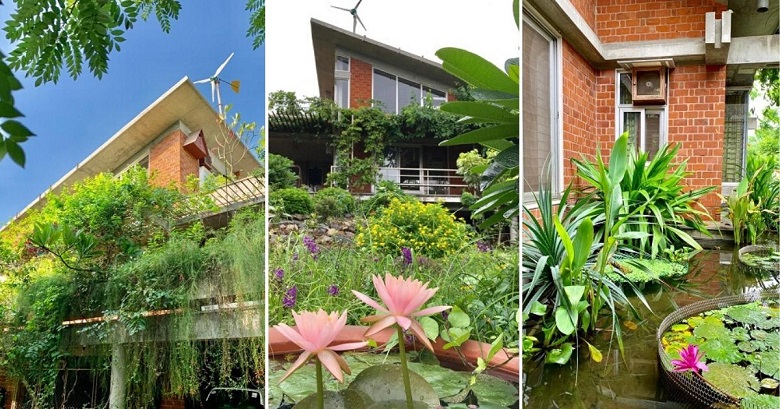
“Growing up, my father would take us to the Dangs forest in Gujarat for our family trips, and I continue to go there. And when I finished my Engineering degree in Manipal in 1983, I returned to find that the city was losing all its greenery. Manipal was really green and I wanted the same for Surat,” he says.
With a resolve to protect whatever little fauna remained, he founded Nature Club in Surat in 1984 with two others. There are about 2,000 members in the group, which is now a registered NGO.
“I purchased a barren 4-acre plot of land in 1996. I started planting trees and was certain that I would live here one day. So, when it came to designing and planning out the home, whatever I had been preaching for years was put into practice,” says the 60-year-old.
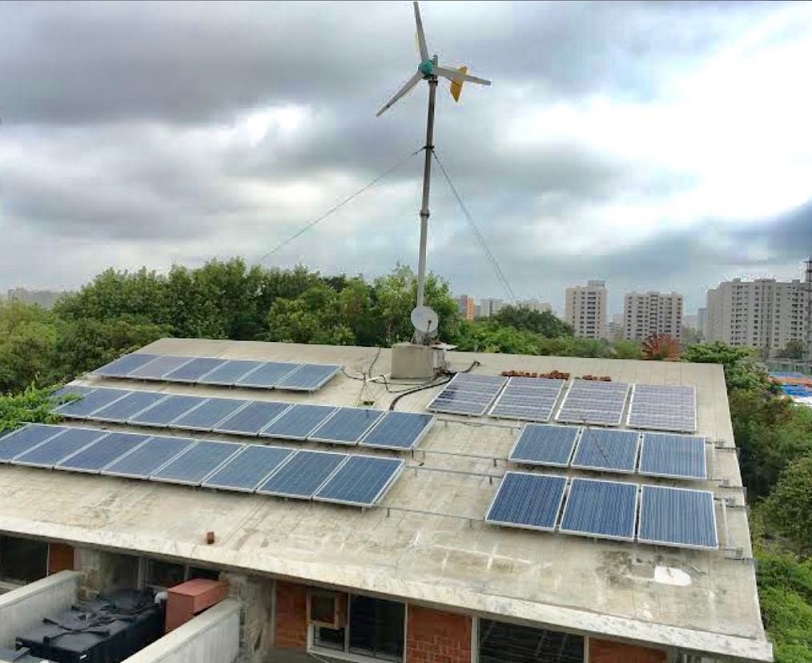
There was a 30-point draft where he listed all his requirements. Architect Falguni Desai who had been constructing green buildings gave life to his ideas.
“I had a savvy client who knew exactly what he wanted. Snehal Patel gave me an expansive brief with details even on the technicalities. And most importantly, his ideas proved he was sympathetic to the environment,” says the 55-year-old Surat-based architect, who runs the firm Aeterrain.
The construction of the two-storeyed house (area of 12,000 sq feet which includes ground floor and the first floor) took three years. It was built on a 5,000 sq ft area. Now, there are about 700 trees of 70 varieties in the compound, along with a pond to facilitate groundwater percolation.
Snehal and his family have been living in this three-bedroom house for eight years now. All the wood used has been upcycled using ingenious techniques, so the house remains cool.
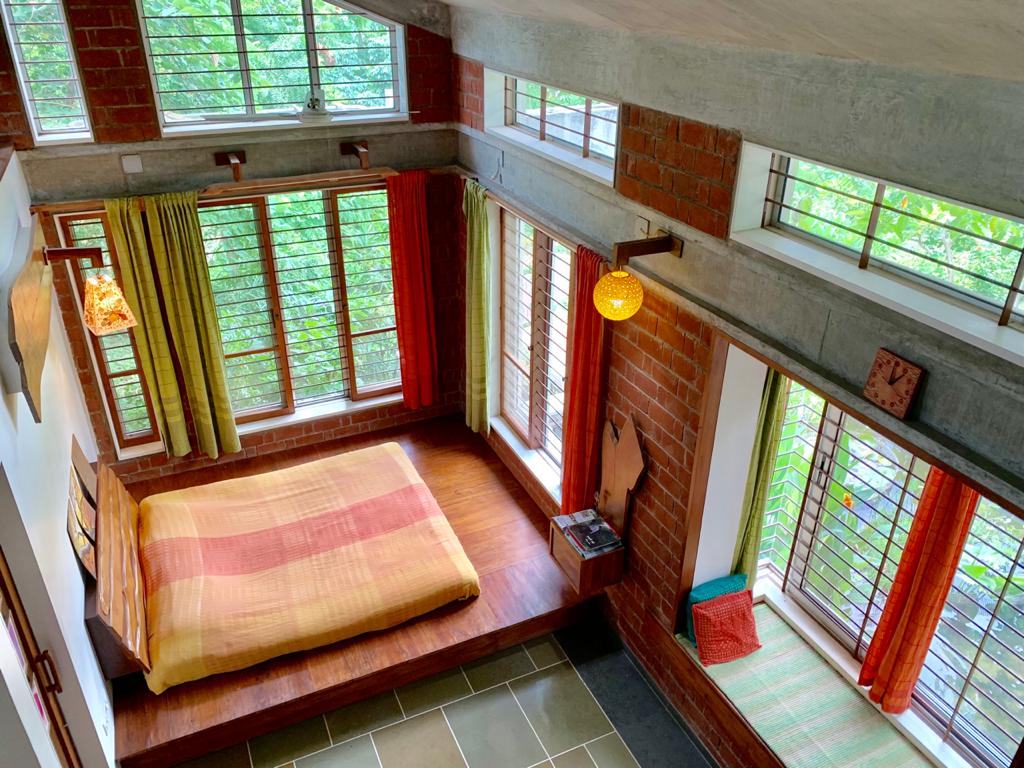
Snehal and Falguni take us through each feature of the house that sets it apart.
Efficient and resource-saving
To reduce his carbon footprint, Snehal Patel decided to go off-grid. In the eco-home, a solar panel system with a capacity of 7.5 KW has been installed to meet the family’s energy needs.
“Here, the solar panels are installed at an angle, and directly laid on the roof, so they absorb maximum solar energy. In the monsoons, the solar output may be less, and hence, a wind generator has been installed,” says Snehal.
Additionally, the water management system in the house is unique. Not only is it independent of water supply, but the efficient reuse of wastewater saves water. A water tank at the rooftop stores rainwater filtered with a cloth filter and this is used in taps in the kitchens and bathrooms.

Once the rooftop water tank is full, the water flows down through a channel and connects to another tank on the ground floor, which can store two lakh litres. Before water reaches the storage tank, it is filtered through layers of gravel, sand, charcoal and a sieve.
After this tank is filled, there is an outlet for the extra water to be let out for groundwater recharge. The ground here is prepared with bricks, gravel and soil, to mimic the natural process.
“Some of the water is also let out on a piece of land where a pond has been constructed. On the other hand, greywater from washing machines is collected in a tank below the machine. With the help of a sump pump and a pipeline, this water is used in toilet flushes around the house,” informs Patel.
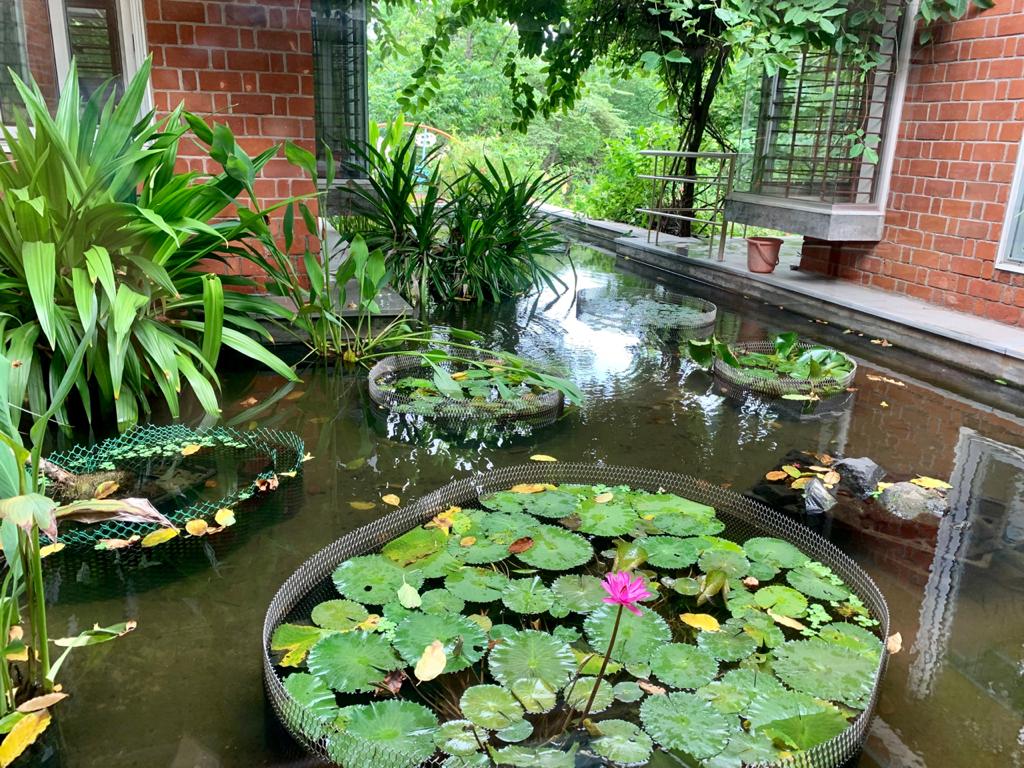
Research says that about 80 per cent of all wastewater in Indian urban households is greywater. This means that recycling this water can substantially reduce overall water consumption in our homes. The Central Pollution Control Board (CPCB) estimates that about 38,000 million litres of sewage is generated in the country each day, but treatment capacity is only for 12,000 million litres per day.
In an article published in The Hindu, experts spoke about how an average Indian residing in an urban area utilises about 180 litres every day, 45-50 litres of which is spent on toilet flushing alone. They recommend incorporating recycling systems during construction that can facilitate the efficient use of valuable resources and prevent groundwater contamination or pollution of water bodies.
The house doesn’t have any sewage connection and reuses water from the bathrooms (washbasins and bathing area). An effective root zone filtration system has been set up using sand and plants like hyacinths, duckweed, and water lettuce. These plants help in cleaning the water.

These plants are harvested every month and added to the home garden as fertiliser while the water (that the hyacinth grows in) enters another tub where oxygen is added using a water umbrella and water lily plants.
There are also tiny guppy fish present in the tubs (used in the later stages) which prevent the breeding of mosquitoes, showing that the water is ready for gardening.
The blackwater from the toilets goes into settling tanks. Once the solids settle down, the water is filtered and used for watering in the garden. And, the solid material is turned into compost.
Ingenious hacks around the house
To use electricity efficiently, large windows let in ample light in the day and ventilate the house. Also, all the materials used are locally sourced stones and bricks, keeping the carbon footing through transportation at a minimum.
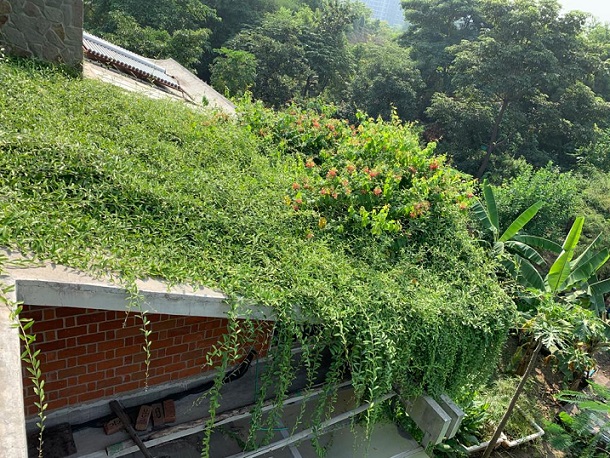
The floors are made of Kota stones (as opposed to vitrified tiles) as they consume less energy while cutting and polishing.
The wood used is all upcycled and bought from traders who source it from demolition sites. “Some of the wood has also been sourced from Alang Ship Breaking Yard in Gujarat. The wood used for making ships is really good quality and well seasoned which is why we decided to use it,” informs Snehal.
The walls, on the other hand, are unplastered and use no paint. “We used the rat-trap bond wall construction method which uses fewer bricks and helps in insulation,” states Falguni Desai.
In this technique, the bricks are placed vertically, instead of horizontally, leaving a hollow space within the wall structure.

A small pond with fish and aquatic plants within the house keep it cool. “For cooling the bedrooms, we passed pipes through the rainwater storage tanks on the ground floor. These pipes open into the room and attach to 30-watt fans at the end. When the fans are switched on, the cool air in the pipe (because of the water around it) provides natural air conditioning,” explains Snehal.
Further, the sloping roofs and the exhaust fans in each room help in pushing out hot air. The roofs are painted using special ceramic paints that keep the interiors almost 3-4 degrees cooler and reflect sunlight off the roof. There are creepers on some parts of the roof with trees strategically planted in the east and west sides of the building, which blocks sunlight and keeps the interiors cool.
Another aspect of the house, which is a favourite of the architect, is the spaces created in the exterior walls (using 2.5-4 inch diameter PVC pipes) for birds to create their nests. There are wooden pieces with holes, hung outside for wasps and smaller insects to nest.
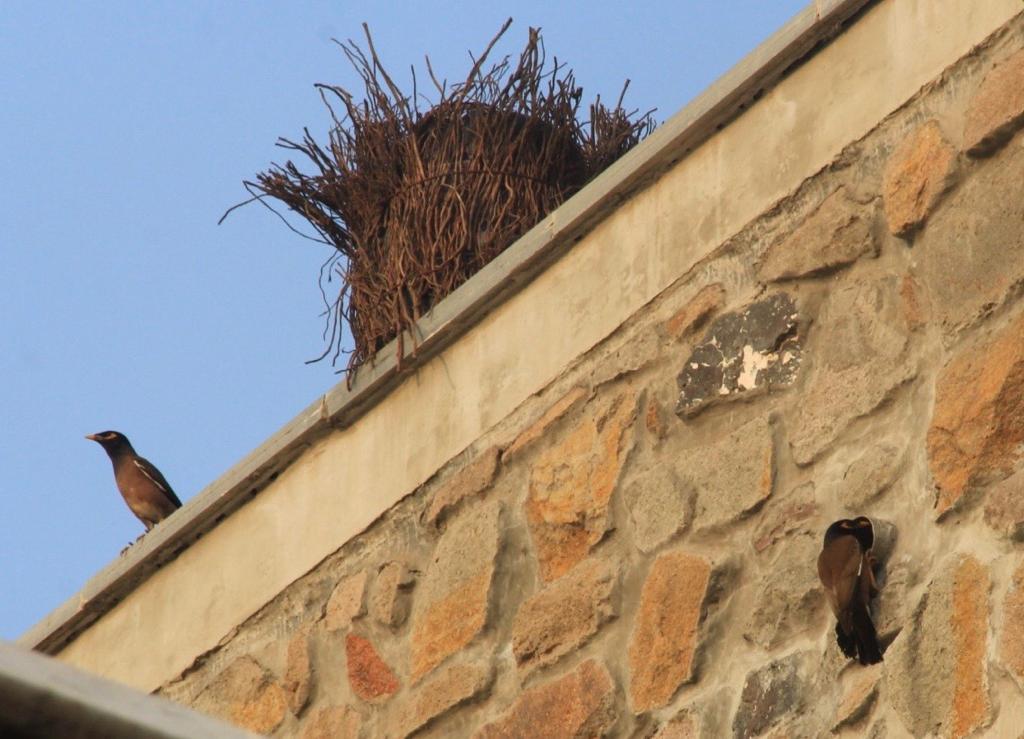
In terms of the interiors too, all the furniture is made by local artisans using cane and bamboo which is more sustainable than wooden furniture. There are no RO filters and a natural filter is made using five copper pots. The water is passed through layers of coconut charcoal, marble chips, white sand, and silver coins that form the bottom-most pot.
“Silver and copper are known for removing bacteria from water. This filter neither needs electricity nor does it waste water, unlike RO filters. One just has to remove the components for filtration once a year,” he says.
If you ask Falguni about challenges, she says that there were none. This was because the client was very clear about what he wanted and she already had a team that was well acquainted with sustainable construction techniques.

“In fact, the building is a perfect model for students and clients, in terms of building an eco-conscious home,” she says.
Snehal, on the other hand, says that the house took three years to build because they were constantly brainstorming and improvising to make it as sustainable as possible.
“I wanted this house to inspire people. Homes should not be built to cut you off from nature. It is possible to have an energy-efficient and resource-saving home where nothing goes to waste,” he says.
(Edited by Shruti Singhal)
Like this story? Or have something to share?
Write to us: [email protected]
Connect with us on Facebook and Twitter.
If you found our stories insightful, informative, or even just enjoyable, we invite you to consider making a voluntary payment to support the work we do at The Better India. Your contribution helps us continue producing quality content that educates, inspires, and drives positive change.
Choose one of the payment options below for your contribution-
By paying for the stories you value, you directly contribute to sustaining our efforts focused on making a difference in the world. Together, let’s ensure that impactful stories continue to be told and shared, enriching lives and communities alike.
Thank you for your support. Here are some frequently asked questions you might find helpful to know why you are contributing?


This story made me
-
97
-
121
-
89
-
167











